When you arrive in Port of Spain, the capital of Trinidad, you’re greeted by the smell of spices and the sound of street vendors. City’s food is like a warm hug, blending flavors from different cultures. It’s a story of migration, resilience, and joy.
This journey through the island shows how African, Indian, European, and Middle Eastern traditions came together. They created one of the Caribbean’s most lively food scenes.
Every dish in this city tells a piece of its history. You’ll find curry with cumin, roti dough as thin as love, and callaloo with island herbs. This article takes you on a flavor journey through Trinidad’s kitchen, a global mosaic.
Whether it’s enjoying doubles at dawn or sharing pelau under mango trees, these moments are special. They’re more than just food; they’re a way to connect with a culture that values sharing and survival.

Key Takeaways
- Trinidad cuisine blends African, Indian, and European flavors into a unique Caribbean food identity.
- Culinary travel to Trinidad reveals how migration shaped dishes like doubles and pelau into cultural landmarks.
- Trinidad’s street markets and family recipes offer a window into centuries of shared traditions and innovation.
- Exploring the island’s spice markets and home kitchens reveals the heart of its culinary heritage.
- This guide serves as a roadmap for experiencing the island’s most authentic flavors and stories.
Introduction to Trinidad Multicultural Culinary Landscape
Walking through Port of Spain’s markets, you’ll hear the sizzle of frying accras and smell curried goat. Each bite shares a story of strength and change. It shows Trinidad’s culinary heritage
The Historical Influences on Trinidadian Cuisine
City’s Caribbean culinary history comes from many places. Spanish colonizers brought plantains and beef. Africans brought okra and callaloo. Indian workers introduced tamarind and curry, and Chinese immigrants started noodle dishes like chow mein.
These groups mixed their traditions, creating a unique Trini taste. Roti wraps meet pelau, and every dish tells a story of survival and new beginnings.
How Geography Shaped Trinidad Food Identity
Trinidad’s forests and coasts are full of food. Mangoes grow in the sun, and the Gulf of Paria gives shrimp for shrimp and dumpling stews. This isolation helped local dishes like macaroni pie grow.
The land itself is a chef, mixing tropical flavors into every dish.
The Significance of Food in Trinidad Culture
Food in this city is more than just food. It’s a way to connect with family and culture. At Divali feasts, doubles and sabji bring people together. Sunday fish fry gatherings are filled with laughter and shared stories.
Trying Trinidad’s food culture is like tasting history. It’s a journey of flavors, one coconut-infused spoonful at a time.
The African Roots of Trinidad Cooking
Walking through Port of Spain’s bustling Queen’s Park Savannah market, the scent of simmering callaloo takes you in history. The African imprint on city’s kitchens is as vivid as the Caribbean culinary traditions that shaped it. Your first taste of authentic Trinidadian callaloo reveals layers of okra, taro leaves, and scotch bonnet fire—ingredients carried across oceans by those forcibly displaced from West Africa. These dishes are more than meals; they’re culinary archives preserving resilience.
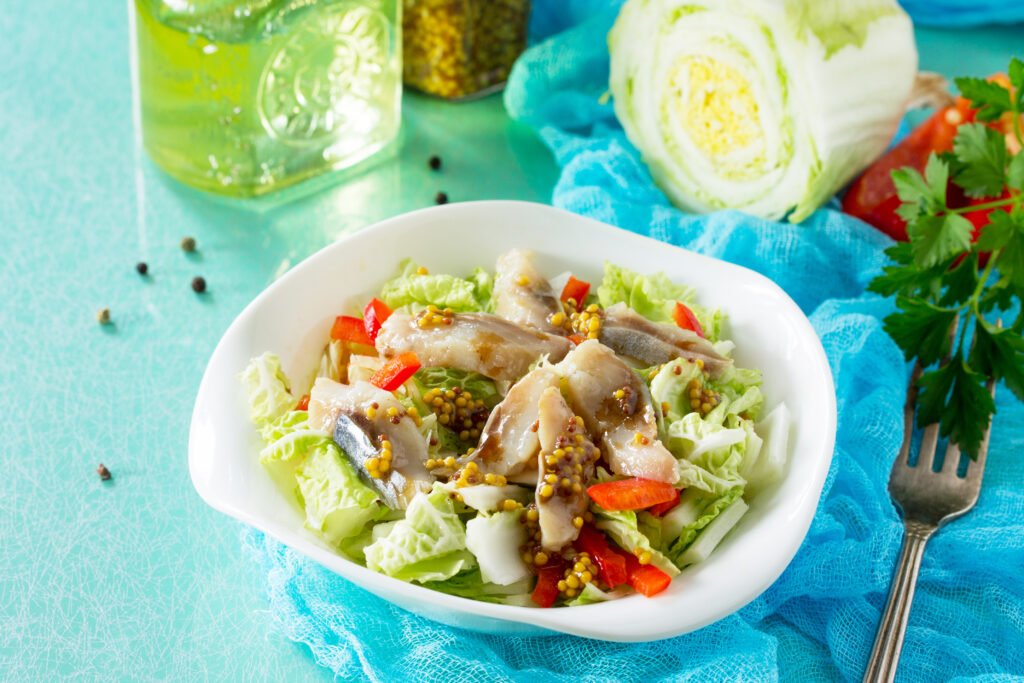
One-pot wonders like buljol (salt cod salad) mirror the ingenuity of enslaved cooks who transformed meager rations into nourishment and memory. The ethnic food tourism experience here isn’t just tasting; it’s tracing how cassava bread became souse and how hot pepper combinations birthed Trinidad’s signature heat. Every bite of ground provisions like eddoes or boniato echoes Yoruba and Fon culinary wisdom, adapted to Caribbean soil.
“African flavors are the soul of our cooking,” says Chef Selina Alleyne, whose family recipes span three centuries. “Even our spice layering—ginger, thyme, garlic—reflects traditions brought by those who refused to let their heritage fade.”
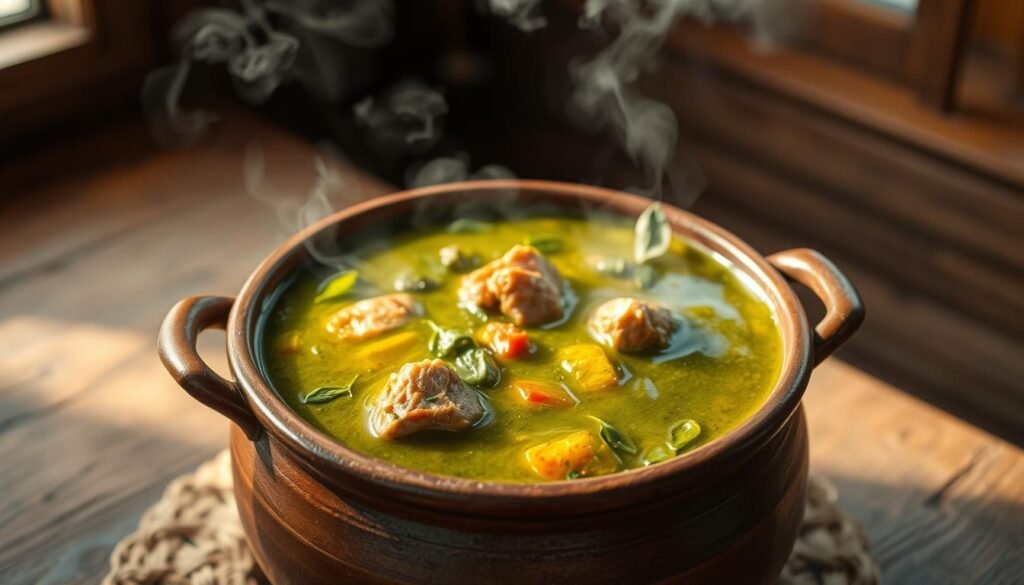
Explore this legacy through dishes like pelau, where rice and meat cook in coconut-infused broths, or the smoky cow heel and tripe stews that honor ancestral cooking methods. These flavors aren’t relics—they’re living testaments to survival, creativity, and cultural pride.
Indian Influences: The Journey of Curry to the Caribbean
In Port of Spain’s markets, the smell of cumin and turmeric draws you in. It’s a taste of Indian food legacy. Your first try of doubles at a street cart becomes a revelation. Curried chickpeas in soft bara bread shows you how Trinidad street food makes tradition local. This culinary alchemy reflects the island’s history, blending laborers’ recipes with Caribbean flavors.
Indian dishes became Trinidadian favorites. Dhal puri, once a simple flatbread, now has split peas and coconut. Its wraps in curried veggies, a multicultural cuisine gem. Street vendors daily turn carts into flavor stages, shaping the island’s food identity.
Traditional Indian Dishes Reimagined in Trinidad
- Dhal Puri: Stuffed with spiced lentils, wrapped around curries
- Curry Goat: Simmered in coconut milk with Scotch bonnet peppers
- Sada Roti: Flaky layers paired with shrimp or chicken in tangy sauces
The Art of Curry Spice Blending
Island curry blends are family secrets. Fenugreek’s earthiness balances Scotch bonnet’s heat. Turmeric’s golden color contrasts with cilantro’s freshness. These Caribbean flavor twists, like adding culantro to garam masala, show Trinidad’s spice adaptation.
From Roti to Doubles: Street Food Revolution
Street carts serve doubles as breakfast icons. Their chickpea filling is spiced with garlic and vinegar. Roti stalls are community hubs, where locals and travelers debate the best vendors. This is where Trinidad’s multicultural cuisine comes alive, in the street markets’ hum.
Chinese and Middle Eastern Culinary Contributions
In Port of Spain’s markets, you find how Chinese and Middle Eastern tastes have mixed into Trinidad’s island cuisine. The work of 19th-century Chinese laborers is seen in chow mein, made spicy with scotch bonnet peppers and tangy shadow beni. Stir-fries, blending soy sauce with tropical herbs, show how cooking methods travel and evolve.
At a family stall, you find a Chinese-Middle Eastern dish: crispy roti fills with curry chicken and coconut rice. The owner says, “This is home, not Beijing or Beirut.” Their story shows Trinidad’s love for mixing old and new in every dish.
“The best tropical cuisine doesn’t just adapt—it transforms,” says Chef Maya Ramjohn. Her curry-pork gyros in flaky flatbread with mango chutney are unlike any Middle Eastern food.
For food tourism lovers, here are three dishes to try:
- Chow mein with callaloo and jerk-seasoned shrimp
- Flatbreads with cilantro-lime hummus and grilled plantains
- Curry chicken spring rolls in tangy tamarind sauce
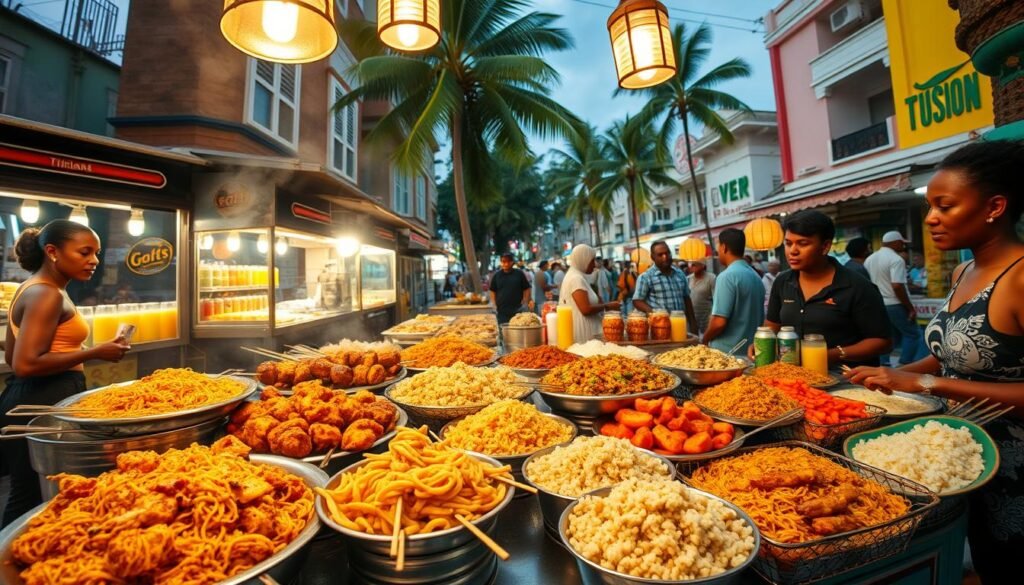
In every market and food truck, you can taste the mix of cultures. Shawarma with green seasoning paste, served with rice and peas, shows Trinidad’s island cuisine is all about bold flavors. For those who love to try new things, this is where global meets local in every bite.
Must-Try Trinidad Dishes for Your Culinary Travel Itinerary
Exploring Trinidad’s food scene is like diving into stories of migration, adaptation, and resilience. These dishes are more than just meals. They are windows into the island’s heart.
Breakfast Specialties: Sada Roti and Buljol
Start your day with sada roti, a soft bread perfect for wrapping around buljol. This tangy salt cod salad is full of tomato, onion, and lime. For a crunchy start, try acras—golden salt cod fritters with a French Creole twist.
Lunch Favorites: Pelau and Macaroni Pie
Pelau is Trinidad’s rice-and-protein masterpiece. Each grain of rice soaks up meat juices and coconut milk, mixed with Indian spices. Pair it with macaroni pie, where sharp cheddar and herbs like thyme and Scotch bonnet pepper make pasta a Caribbean classic.
Dinner Delicacies: Callaloo and Stewed Meats
Callaloo is rich and velvety, made with dasheen leaves, okra, and crab. It traces back to West African cooking. Serve it with meats slow-cooked in Trinidad’s iconic browning sauce, flavored with green seasoning.
Sweet Endings: Traditional Trinidad Desserts
- Black cake: A rum-soaked layered dessert, denser and spicier than European fruitcakes.
- Pone: A rustic cassava and coconut cake, with an earthy sweetness from indigenous and African roots.
- Kurma: Crispy fried dough pockets filled with spiced sweetened coconut, echoing India’s mithai but uniquely Caribbean.
Every dish in Trinidad’s kitchen tells a story of cultural crossroads. Whether it’s the smoky stewed oxtail or the tropical mauby, each bite is a journey of discovery.
Trinidad Street Food Scene: A Culinary Adventure

Trinidad’s street food is more than just food—it’s a living piece of the island’s history and creativity. For those who love to explore, this scene is a journey of flavors.
In Port of Spain, the air fills with the smell of food. To truly experience it, follow the locals, not the tourists. At Independence Square, the evenings turn into a lively market. Here, doubles, pholourie, and aloo pie vendors compete for your taste buds.
Best and favorite part? The vendors calling out their specials. Their voices mix with the smell of fried dough and spices.
Navigating Port of Spain’s Food Vendors
Start at Curepe’s Doubles Festival. Here, families have perfected their chickpea sandwiches for generations. Watch as bara bread crisps up around spiced chana. This is Trinidad street food at its best.
Must-Visit Food Trucks and Stands
- Curepe’s doubles stands: Look for the vendor with the longest line. The texture of the chickpeas and bread is key.
- Pholourie carts: Try the crispy split-pea balls with tamarind sauce. It shows the island’s love for bold flavors.
- Maracas Beach stalls: Don’t miss the bake and shark at sunset. It’s a mix of salty shark, crispy bread, and tangy sauce.
Street Food Etiquette and Tips
Here, etiquette is all about asking for “slight pepper” if you don’t like it hot. Don’t worry about making a mess—locals love it. Timing is everything: saheina spinach fritters are gone by midday, and midnight corn soup appears after the clubs close.
This is true ethnic food tourism. It’s a mix of tradition and spontaneity. Every vendor has a story to tell. Let your taste buds guide you—this is where Trinidad’s soul meets your plate.
Culinary Travel Guide to Trinidad’s Markets and Food Festivals
Start a journey through Trinidad’s food scene at its lively markets and festivals. Here, food tourism turns into a form of art. The Central Market in Port of Spain is a daily show of colors and smells. You’ll find Caribbean food favorites like ackee, cassava, and shadow beni.
Vendors here share stories. They can tell you how to pick the best mangoes or fold a paratha. Nearby, Chaguanas Market offers Indo-Trinidadian tastes. You’ll find fresh curry mixes and warm roti dough.
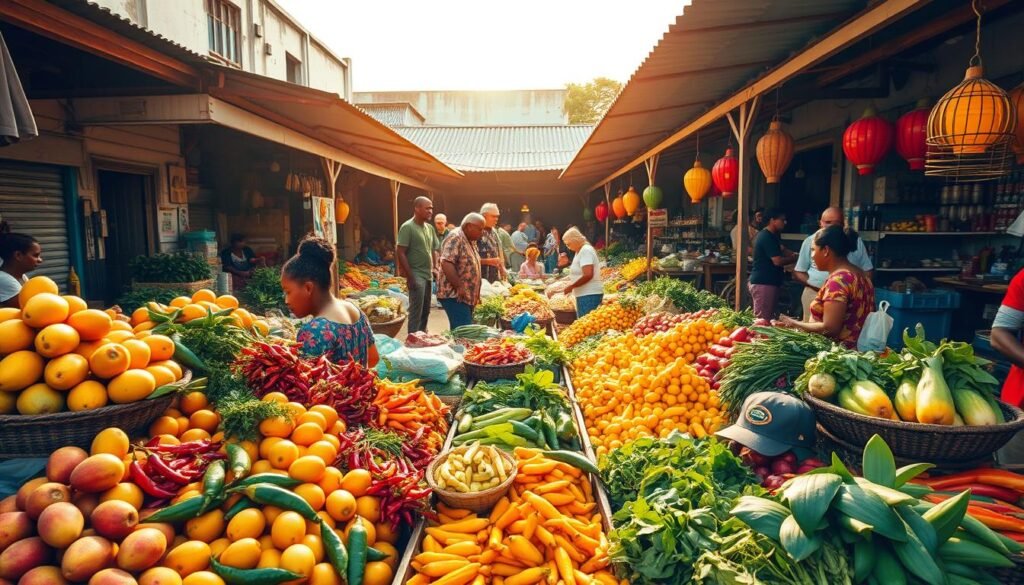
Plan your culinary travel around Trinidad’s festivals. The Blue Food Festival in October celebrates dasheen in new ways, like in ice cream. The Tobago Heritage Festival in July shows off ancient cooking methods.
Don’t miss the Trinidad and Tobago Chocolate Festival in May. It’s all about local chocolate makers, like Epicurean Escape.
| Market/Festival | Highlight | Season |
|---|---|---|
| Central Market | Shadow beni stalls & fresh paratha | Year-round |
| Blue Food Festival | Dasheen wine tastings | October |
| Chocolate Festival | Bean-to-bar workshops | May |
These events mix tradition with new ideas. They open doors to Trinidad’s food soul. Come with curiosity and an empty stomach. The island’s tastes are waiting for you.
Trinidadian Cooking Techniques and Ingredients Explained
Every Caribbean cooking success starts with key methods and ingredients. In Trinidad, you learn how these basics turn simple items into memorable meals. The heart of Trinidadian dishes is green seasoning. This herb mix combines culantro, thyme, and garlic to flavor meats and stews.
Learning “browning” is crucial. It means slowly cooking meat in a pan to add flavor to stews and curries.
- Blend fresh herbs, green onions, and scallions for green seasoning
- Caramelize sugar with meat for browning
- Layer spiced lentils into dhal puri dough before frying
The Green Seasoning Base: Foundation of Flavor
This tropical cuisine essential needs careful balance. Chefs often grind ingredients in stone mortars for the best texture. Use it to marinate or as a final touch—it adds a fresh herbal taste to pelau or grilled meats.
Techniques for Perfect Roti and Bake
| Type | Technique | Pairing |
|---|---|---|
| Dhal puri | Layer spiced split peas into thin dough rounds | Stewed chicken |
| Paratha roti | Laminated layers fried to flaky perfection | Curry goat |
| Bake | Stretch dough into pockets while frying | Shrimp or doubles |
Working with Local Fruits and Vegetables
- Christophene (chayote): parboil to reduce bitterness
- Green figs (unripe bananas): cook 45-60 minutes for savory dishes
- Mangoes: Use Alfonso for salsas, Haden for desserts
Using these techniques makes tropical ingredients into dishes that celebrate Trinidad’s cooking traditions. Every step, from grinding herbs to shaping roti, carries family knowledge. Whether it’s mastering green seasoning or handling eggplant carefully, these steps ensure true Trinidadian flavors come through.
Drink Pairings: From Rum Punches to Sorrel and Mauby
Trinidad’s drink traditions are as rich as its culinary heritage. A glass of mauby or a cup of tangy sorrel is more than a drink. They tell stories of cultural mix. These drinks make meals into adventures for the senses.
“Mauby’s secret is patience—steeping the bark for days brings out its depth,” explains a Port of Spain vendor, her stall brimming with hibiscus bundles and spice jars.
Drinks and local dishes together bring out the island’s full flavor. Here’s how to pair Trinidad’s famous drinks:
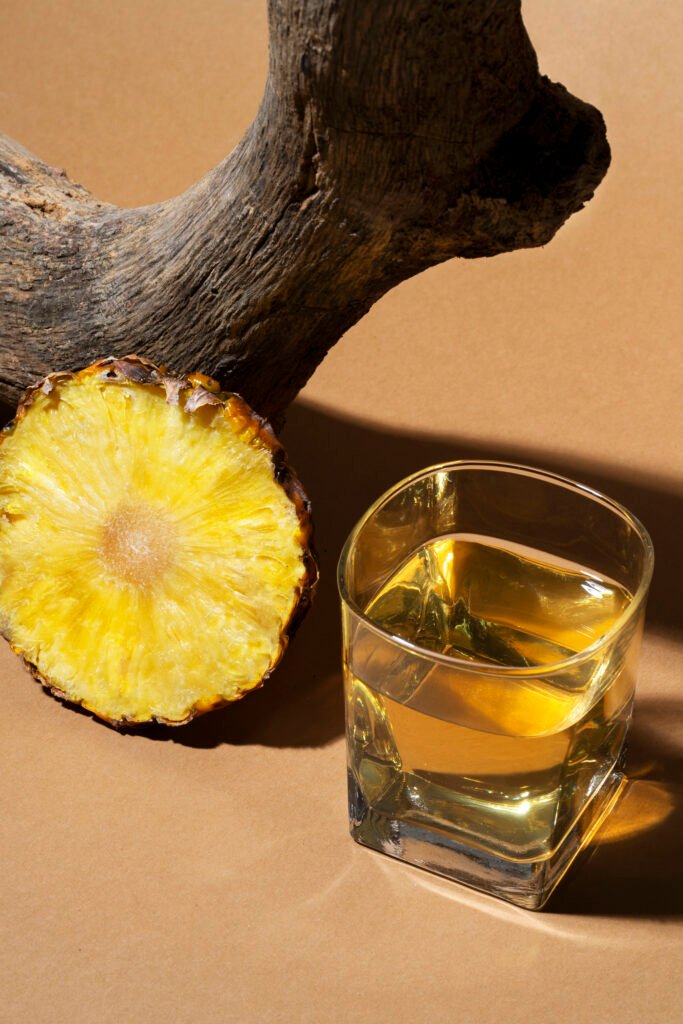
- Rum Punch: Mix dark rum, lime, and soursop for a cocktail that matches the Caribbean flavor of pelau or stewed chicken. The fruit’s sweetness balances savory dishes.
- Sorrel: This ruby-red brew, simmered with cloves and ginger, pairs well with spicy doubles or holiday dishes like green seasoning-infused curries.
- Mauby: Its bitter-sweet taste cuts through fiery island cuisine staples like pepperpot, offering a cooling contrast.
- Coconut Water: Freshly cracked from green coconuts, it’s perfect with fried accras or morning roti.
| Beverage | Pairing Highlights | Cultural Role |
|---|---|---|
| Rum Punch | Pelau, doubles | Festival celebrations, family gatherings |
| Sorrel | Holiday meals, curries | Symbol of yuletide joy |
| Mauby | Spicy street foods | Street vendor tradition |
These drinks are more than just sides—they’re the heart of Trinidad’s food culture. Enjoying them with meals shows how traditions grow through taste. Every meal becomes a chance to share the island’s rich history.
Where to Eat: From Local Haunts to Fine Dining Experiences
Trinidad’s Caribbean culinary traditions shine through its dining spots. Each meal here tells a unique story. Your food tourism adventure shows you places that mix old traditions with new twists.
In Port of Spain, Chaud Restaurant offers a modern twist on local dishes. Their coconut-infused lobster tail is a must-try. Right across the street, Veni Mangé serves up callaloo and pelau in a historic house. It’s a true taste of culinary exploration.
- Chaud Restaurant: French-Trinidad fusion dishes in a sleek downtown setting.
- Veni Mangé: Home-style Creole classics in a historic colonial space.
- Patraj Roti Shop: Generational mastery of dhal puri and goat curry since 1952.
Travel south to San Fernando for Soong’s Great Wall’s soy sauce chicken. It’s a Chinese-Trinidad favorite. In rural Grand Riviere, Elsie’s offers crab callaloo made from fresh seafood. For a unique experience, try Curry Duck Lime in Penal. They cook duck curries in wood-fired ovens, a tradition passed down through generations.
| Region | Must-Try Spot | Signature Dish |
|---|---|---|
| Port of Spain | Patraj Roti Shop | Dhal puri |
| Grand Riviere | Elsie’s | Crab callaloo |
| Penal | Curry Duck Lime | Wood-fired duck curry |
These spots capture the heart of Trinidad’s cuisine. From Tobago’s Miss Trim’s crab and dumplings to roti’s journey through family kitchens, every bite connects you to the island’s history. For guided tours that highlight these places, reach out to our experts at Trinidad culinary tours. Each meal here is a chance to taste history.
How to Plan Your Trinidad Culinary Travel Experience
Planning a culinary travel adventure to Trinidad is more than just a list of restaurants. It’s about curiosity and rhythm. Time your visit for festivals like pre-Carnival street food frenzies or October’s harvest festivals. These times are when ethnic food tourism shines in colorful, ingredient-driven celebrations.
A seven-day itinerary is a good start. Spend the first days in Port of Spain. Then, head east to Aripo or south to Caroni for different food culture experiences.
- Book a guided tour with Trinidad Food Tours to explore spice markets and hidden eateries
- Reserve a cooking class at Fanatic Kitchen Studio to learn roti folding or curry pastes
- Rent a car for easy access to village markets and roadside doubles vendors
- Choose accommodations like Coblentz Inn where heritage meets culinary stories
“The best food culture discoveries happen where locals gather—not just where guides lead.”
Enjoy Trinidad’s relaxed pace. Try haggis at 8 AM or pelau cooked over charcoal. It takes patience. Learn about doubles’ history to appreciate it more.
Wear light clothes but carry curiosity. Ask vendors about their recipes. This shows respect and turns meals into meaningful exchanges.
Conclusion: Bringing Trinidad’s Flavors Into Your Home Kitchen
Every spoonful of Trinidadian cooking tells a story of a nation shaped by migration and resilience. To bring Caribbean cooking into your home, start by stocking up on key ingredients. Look for culantro, scotch bonnet peppers, and curry blends at specialty shops or online.
These ingredients unlock the secrets of Trinidadian recipes. Learning to make dishes like chunkay or callaloo with coconut milk turns your kitchen into a window to the island’s culinary heritage.
Try making pelau with local grains or roti dough in a cast-iron skillet. These tweaks show Trinidad’s spirit of innovation, where scarcity sparks creativity. Sharing doubles or simmering sorrel on a cold day connects you to the island’s rich history.
Every dish of stewed chicken seasoned with green seasoning tells a story of how food bridges borders. It brings the warmth of Port of Spain’s markets into your kitchen.
Recreating these dishes is more than just about taste—it’s a celebration of resilience and fusion. By using Trinidad’s methods and ingredients, you join a long history of culinary exchange. Whether making pholourie or your own spice mix, the aim is to connect, not to achieve perfection.
The real treasure of Trinidad isn’t a souvenir; it’s the knowledge to keep its traditions alive in your own hands.


